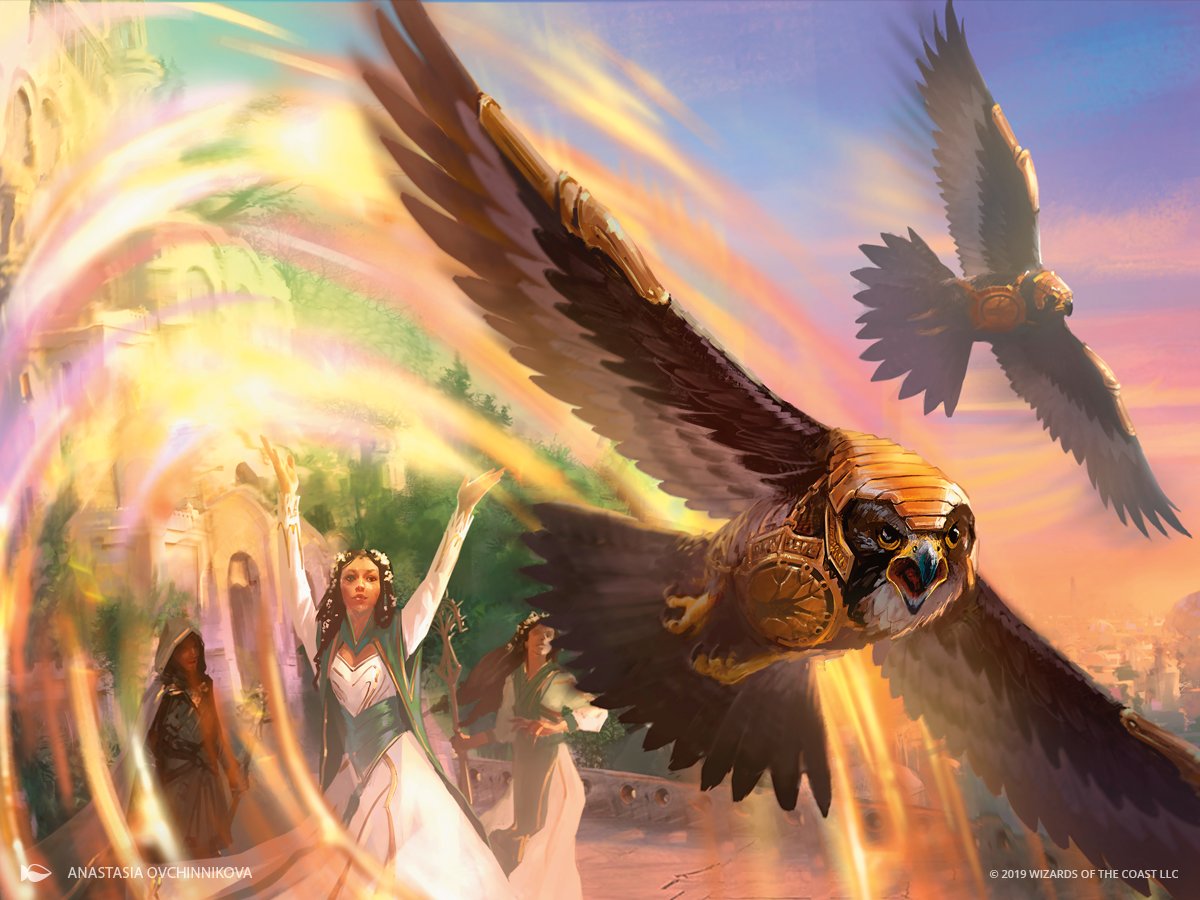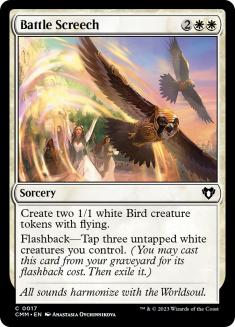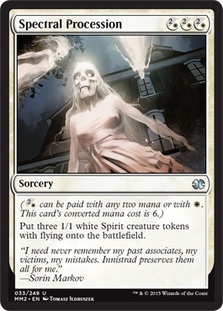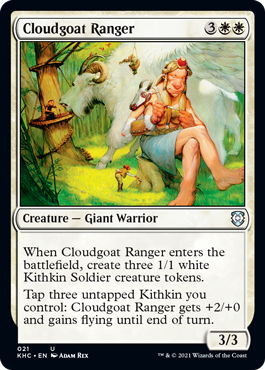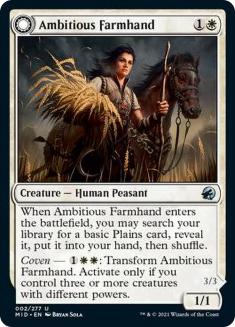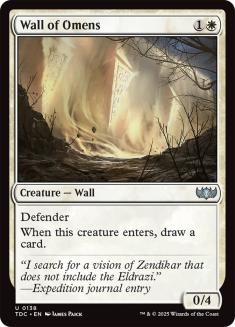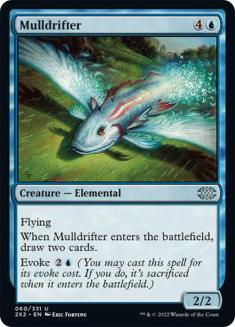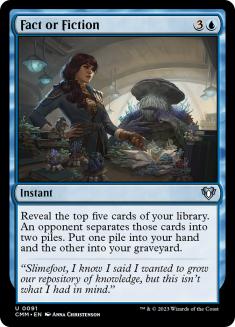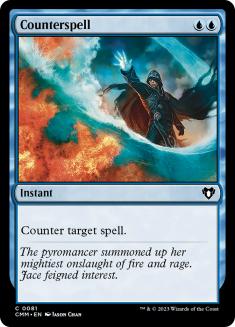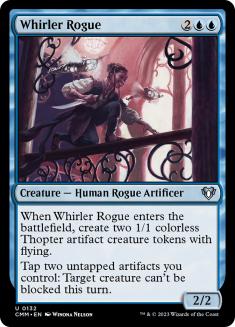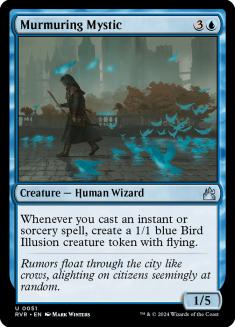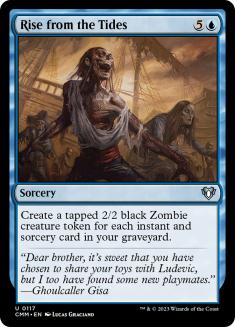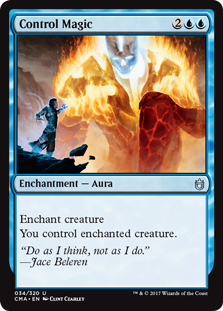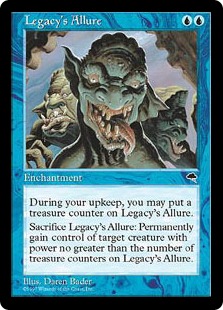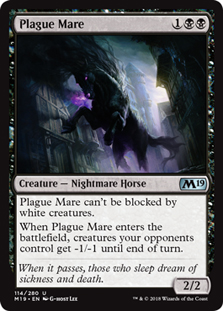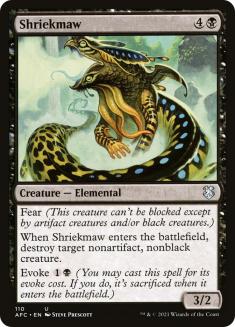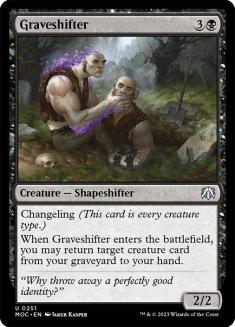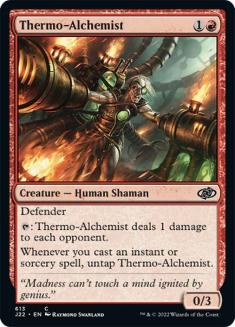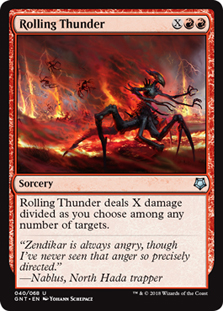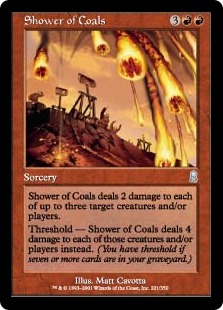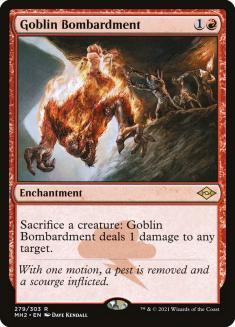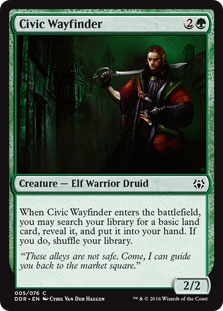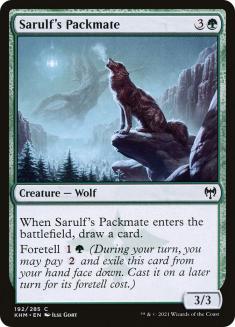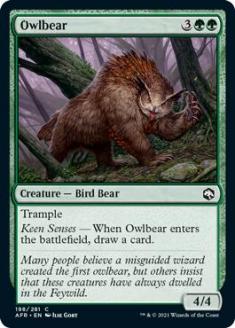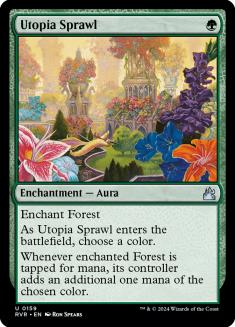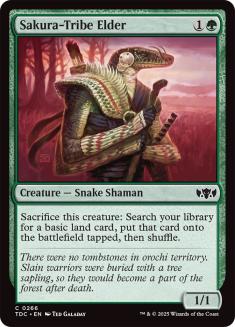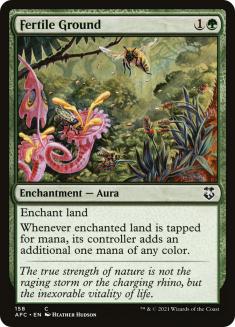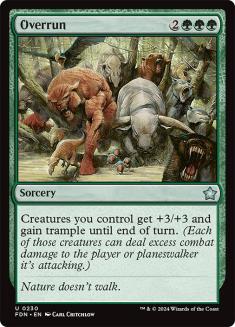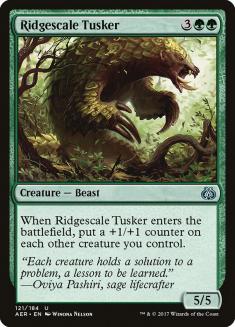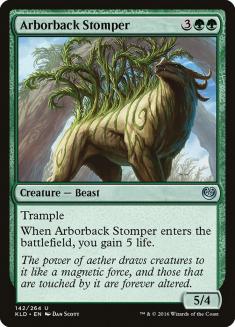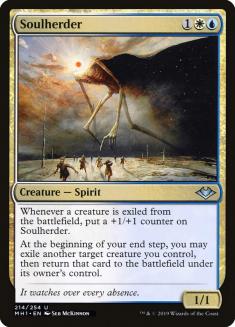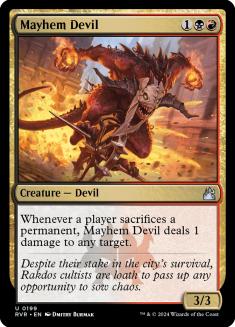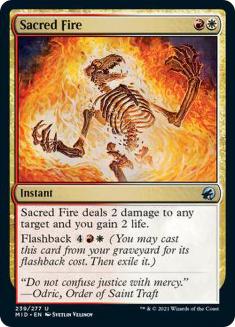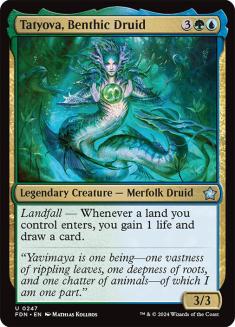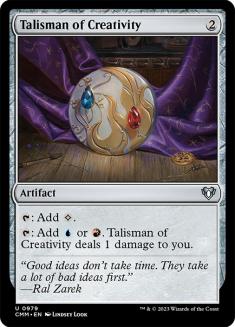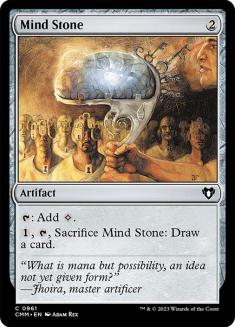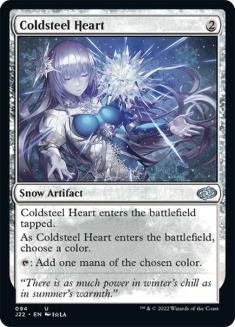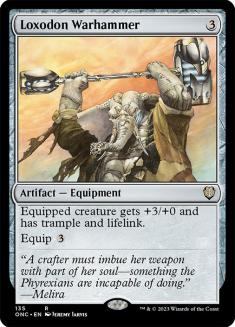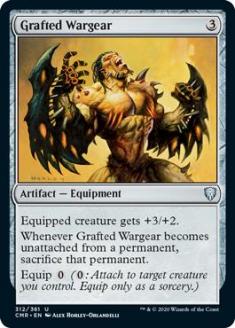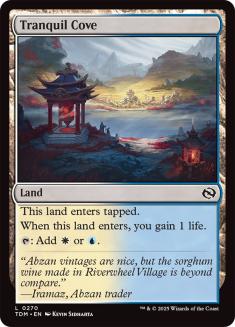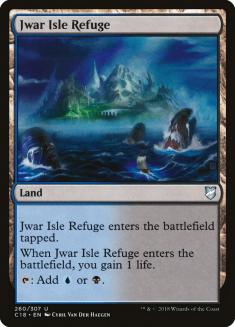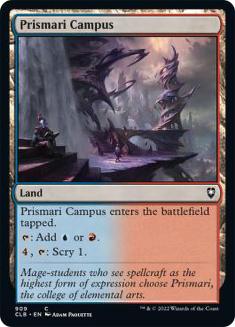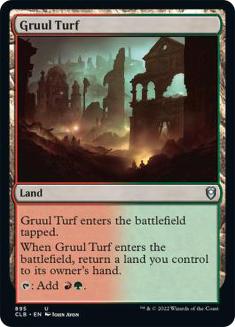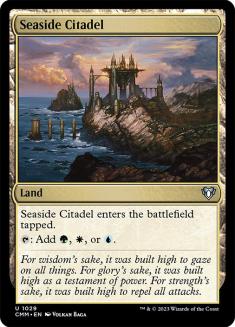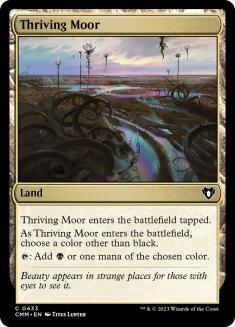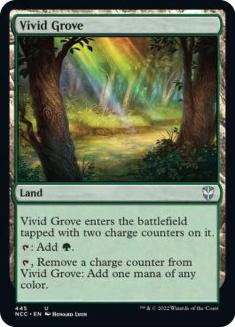Happy Wednesday, gamers! I don’t know about any of you, but I had a ton of fun playing the Standard: Through the Ages Gauntlet on Magic Online (MTGO) last week, and I’m elated to announce that this week we’re gearing right back up into another Spotlight Cube! The Cube du joure this week is Chris Kronenberger’s Artisan Cube 2021.
The naming convention here is a bit odd, with Artisan Cube 2021 being what is more often referred to as a Peasant Cube, which features only cards that have been printed at common or uncommon rarities. I also couldn’t tell you the significance of placing the year in the title, but my guess is that this is a forward-thinking measure. We have seen a Peasant Cube on MTGO before, but we knew that one simply as Amaz’s Peasant Cube. If you played that Cube at the time it was live you’ll notice that a high volume of the individual card choices are different, but also that the core experience is fairly similar, and your experience will come in handy here.
As for the creator, you might not necessarily be familiar with Chris, but I have ties to him and some of his playgroup in Ohio from my grinder days. He won a Legacy Open with Mono-Blue Control featuring Energy Field back in 2011, and is definitely no slouch at Magic. You can find his write-up of the Cube which outlines the supported archetypes and highlights some choice cards here.
To make better sense of the list you can find my port to Cube Cobra here. Peasant Cube is also a format that I’ve done some work on personally recently, and I imagine that my Peasant Twobert article will be of some value if you’re new to this style of Cube. There are some differences in card choices and preferences, but outside of my support for Shrines the archetypes overlap almost exactly.
Had we known that this Spotlight Cube was coming we might have structured things differently, but next week’s episode of The 540 is going to be an overview of Peasant Cubes, with this week’s highlighting Pauper. So we don’t have that ready to go for you just yet, but it should be interesting to give that a listen after you’ve tried your hand at drafting Artisan Cube 2021. The broad overarching point about Peasant Cubes that’s important to keep in mind is that the games are largely about trying to get ahead on the battlefield and/or generating card advantage. The ideal plays do both.
With that in mind, let’s take a look at the Cube by color and how I’d go about drafting.
White
The major themes in white are sacrifice, blink, and tokens. Tokens is sort of a through-line for sacrifice and blink as well, and the best white cards tend to be ones that play well in token decks. You can tell that these decks have been slightly powered down with Lingering Souls absent from the list, but many of the heavy hitters are still present.
There’s an argument for Mother of Runes, but Cloudgoat Ranger is my pick for the most powerful individual white card. Not only does it have a massive impact on the game just casting it from nothing, but it also synergizes with all of white’s themes. Thraben Inspector is also pretty high on the list, but games will basically always go long enough to feel the impact of your more expensive cards.
On that note, some cards that you would pick very highly for a format like Vintage Cube are considerably less impactful in Peasant Cube. Cheap aggressive creatures and one-for-one removal are fine to play some of, but you want to make sure that your deck has some way to go over the top of your opponent. Dauntless Bodyguard and Swords to Plowshares are fine here, but it’s easy to bury cards like these with Dragon Fodders and Mulldrifters if you’re not generating any card advantage or utilizing some seriously impactful aggressive cards to supplement them.
White is a fine color, but it doesn’t have the same strengths that it does in the other Cubes that we see on MTGO with Mono-White Aggro being a much less appealing option given the amount of blockers you can expect your opponents to produce. I’m looking for Ambitious Farmhand and Wall of Omens here more than the usual Adanto Vanguard plan.
Blue
A handful of the grotesquely powerful blue cards have been excluded from this list, but I see that the ability to lock opponents out with Forbid has been maintained. If you play this Cube enough times you’ll get to experience some old-school misery on that front. You won’t be subjected to Capsize or Mana Drain, which you do see in some Peasant Cubes, but there is quite a lot of power contained in blue otherwise.
With card advantage being all the rage, blue in this Cube isn’t all that different from other Cubes. Your win conditions will look a bit different, but many of blue’s most powerful interactive and card selection options are present here. With regard to win conditions, blue actually presents some very powerful options for the environment there as well.
Whirler Rogue, similar to Cloudgoat Ranger, is among the best blinkable token generators in the Cube and should be drafted very highly. The spells matter theme in the Cube also gives some very powerful options for generating wide battlefields. Murmuring Mystic takes over games in short order if you get to untap with it, and building up a giant Rise from the Tides is among the more overwhelming spells in the Cube. Delver of Secrets and other aggressively minded blue creatures are about as bad as they ever are though.
The last point I’d like to make regarding blue is that there are a couple of Control Magic effects present, and while I consider these sorts of cards very high picks in most Cubes, there’s some give-and-take in this environment. The heavy tokens and sacrifice themes both push back meaningfully against these cards, though they’re quite powerful against certain builds of those archetypes and against basically everything else. I would pick these cards fairly highly and maindeck them, but I’d be mindful about siding them out against these sort of strategies that cause them to perform closer to awkward Doom Blades.
Like most of the digital Cube offerings, I’d endeavor to draft blue more often than not in the Artisan Peasant Cube.
Black
Black has a nice spread of removal spells, card advantage generators, and support for sacrifice decks. I was a bit taken aback to notice the lack of Gray Merchant of Asphodel, which is both a favorite of mine for Cubes like this and a general fan favorite. Alas, we’ll have to settle for the much less exciting Vampire Sovereign, which admittedly is a very high-impact card with or without blink effects.
The most notable cards in black are going to be the small selection of sweeper effects and the Nekrataal variants. Crypt Rats and Plague Mare are two of the most powerful anti-token cards in the Cube, and Shriekmaw and company do a great job of handling the other sorts of threats that you’ll run afoul of. Graveshifter is notable card advantage generator, especially in conjunction with these other value-generating creatures.
Another of black’s most powerful cards is Thorn of the Black Rose. Being the monarch is one of the most powerful things you can do in a two-player game, and Thorn of the Black Rose is a pretty obnoxious creature to try to attack into. You’ll want to make sure that your deck is good at managing opposing threats if you do end up with the Thorn, and you’ll be rewarded handsomely if you can accomplish this.
One of the other big draws to black is the range of permanents that generate value when creatures die. Blood Artist is conspicuously absent, likely given that it triggering off opponents’ creatures can be oppressive, but there’s a wide range of other options. Zulaport Cutthroat; Syr Konrad, the Grim; and Bastion of Remembrance are all excellent tools for sacrifice decks, and the more of them you can get the better. Innistrad: Midnight Hunt all-star Morbid Opportunist also makes an appearance here, and is not to be overlooked for this style of deck.
You’ll also find a myriad of spot removal spells, which I’d value comparably to the white ones. The draw to black and really any color is rooted far more in synergistic cards and ways to generate card advantage. I’d take Night’s Whisper over Ultimate Price almost every time. There’s some cheeky Reanimator stuff going on as well largely centered around cycling creatures, and while I imagine you’re supposed to play cards like Necromancy fairly often, I wouldn’t take them over the value creatures and would primarily true to use them to rebuy my Mulldrifters and Cloudgoat Rangers.
Red
Where I’m rather skeptical of white as an aggressive color in this Cube barring token and sacrifice synergies, I do have considerably more faith in red. There’s a good amount of reach here both in the form of burn spells and some permanents like Thermo-Alchemist and Guttersnipe that can deal tons of damage even in the face of blockers. Not to mention heavy-hitters like Rolling Thunder and Shower of Coals to clear out blockers and/or opponents.
You’ll also find Pyroclasm and Slice and Dice as solid answers to token decks, though more often than not I’d prefer to be on the token side of these exchanges. There are lots of powerful sacrifice outlets and death triggers that are really punishing for these cards, and I’d prefer to be doing something at least somewhat proactive and actually closing games.
This is especially true given the presence of Goblin Bombardment, which is easily the most powerful red card in the spread and contender for most powerful card in the Cube. It’s incredibly difficult to make any positive exchanges against a Goblin Bombardment that’s on the battlefield, and it doesn’t take terribly long to just close the game with the card. There are a handful of lifegain effects and ways to destroy enchantments in the Cube, but all the same you’ll overwhelmingly want to be on the Goblin Bombardment side of that equation.
Flametongue Kavu gets to relive some of its glory days in Cubes of this power level, though you’ll more often be splashing it in decks with blink effects than looking to play it in your heavier red decks. There’s nothing wrong with controlling red decks in this Cube, but red’s strengths lie much more in damaging opponents than damaging creatures.
A peculiar card to keep an eye on that comes at you straight from 2011 Legacy sideboards is Sulfur Elemental. It’s not an outright embarrassing creature to cast if you’re leaving up some other instants or just want a surprise blocker, but it’s an absolute house against the white token decks. This one is going to take some Spectral Procession players by surprise. Not that there’s anything that they can do about it.
I like the look of the red spells matters and sacrifice decks, and I wouldn’t discount the more general red aggressive decks either. Charging Monstrosaur was a house in the early Arena Cubes, and that’s going to be the case in a lot of Peasant Cube matchups as well.
Green
There’s some support for aggressive green decks here, as you’ll often see in 540-card Cubes, and as per usual you’ll want to pretend that Experiment One doesn’t exist for most of your drafts. We’re looking for ways to generate mana advantage, card advantage, and large creatures that will be difficult for opponents to deal with. One of the first cards that I looked for in the list was Llanowar Visionary, and I wouldn’t be surprised if it was cut for overperforming. There are still some very powerful green cards on the card advantage front present though.
You’ll also find a heavy dose of cheap mana accelerants in the spread, with the more or less unanswerable Utopia Sprawl and Wild Growth leading the charge. Llanowar Elves is only slightly worse than these, and I actually like the two-mana accelerants a lot considering that all of the nonbasic lands in the Cube enter the battlefield tapped. Sakura-Tribe Elder and Fertile Ground are both very high picks for facilitating the three- or more-color value decks that you’ll often see terrorizing the Peasant Cube tables.
An interesting card versus card comparison to make in the Cube is Ridgescale Tusker versus Overrun. Overrun does a better job at literally ending the game and might read as a high pick for a tokens deck, but I would take Tusker over it literally every time. Not only does the Tusker set up the sort of attacks that turn the game heavily in your favor anyway, it has an incredibly relevant “fail case” of being a 5/5. With so many creatures present in the Cube, blocking just becomes a big part of the game, and while the huge bonus on Overrun sounds nice to break up gummed-up battlefields, I assure you that you’ll get more mileage out of the 5/5 on average. I’d also generally take Arborback Stomper over Overrun, because playing the attrition game is just far more important than looking for huge effects to close with.
Green doesn’t do a ton to play into the sacrifice and blink themes of the Cube, but the mana acceleration and card advantage that it does offer lead to really powerful midrange decks. I’d look to pair green with blue and/or black more often than not, and the mana in the Cube makes that very doable.
Gold
The most important thing to say about gold cards is that there are a lot of three- and five-color lands in this Cube, which makes casting gold cards easier than it often is. These lands all enter the battlefield tapped, so when you do play a three- or more-color deck you’ll want to have a plan against more aggressive opponents, but there’s a lot of lifegain, removal, and blockers for those games present in the Cube. All this is to say that I wouldn’t shy away from valuing gold cards highly.
Even still, some gold cards are much better than others, and this is the list of gold cards that I’m more explicitly looking to first-pick:
This isn’t a terribly long list, and again I’m not shying away from a card just because it’s gold, but this is the cream of the crop. Sacred Fire is also a distant fourth in this spread, but a removal spell with flashback is much more inviting than a one-for-one. Trostani’s Summoner is another gold card worth mentioning that’s just off my list because it costs seven, but it’s high enough impact that I’d value it highly. I’d put cards like Unburial Rites and Baloth Null in a similar spot. They’re great when you can make the game go long, but expensive enough that I’m not jumping on them every time.
Artifacts
There are some very powerful artifacts in the spread here, with all ten Talismans, Mind Stone, Prismatic Lens, and Coldsteel Heart leading the charge. These accelerants to power out your high-value card advantage plays are just another reason to shy away from low-to-the-ground aggressive decks and to make sure you’re doing something big.
Loxodon Warhammer is also totally serviceable, and is the sort of card that can break a token mirror wide open. It’s a little clunky and not what it used to be, but it’s an old heater that didn’t lose all of its luster with age. With all of the sacrifice outlets and death triggers, I’d look to draft Grafted Wargear more highly, but they’re both solid options.
Lastly, I’d like to call attention to Shrine of Loyal Legions. I wouldn’t necessarily play it in a deck without white spells, but it’s the sort of card that easily ends long games. The ability to sacrifice the Shrine at instant speed puts your opponent in a precarious position where they have to play around both the number of tokens you can currently make and also sweat the long game as you threaten to make more and more tokens over time. Scars of Mirrodin is so old at this point that I’d expect the card to be under-drafted initially, and I also expect it to close a lot of games.
Lands
And that leaves the lands. There are 63 lands in Artisan Cube 2021, and the only one that doesn’t fix mana is Mishra’s Factory. There’s one full cycle of lifegain taplands, another half-cycle, Campuses, bouncelands, trilands, and a bevy of five-color options featured here. All of these are powerful options for multicolor midrange and controlling decks and none of them contribute much for aggressive strategies.
Despite entering the battlefield tapped, the upside that these lands provide with regard to fixing multiple colors, the lifegain, or what more or less amounts to card advantage with the bouncelands make the loss in tempo well worth it. I’m sure that there will be opportunities to succeed with monocolor and two-color aggressive decks, I just see the path to success with grindier multicolor decks offering much less resistance.
Peasant Cubes offer a lot of grindy back-and-forth games, and I’m excited to give Artisan Cube 2021 a try. I hope that this overview helps you navigate the environment, and I hope you’re ready to to play some long and interactive games of Magic.

